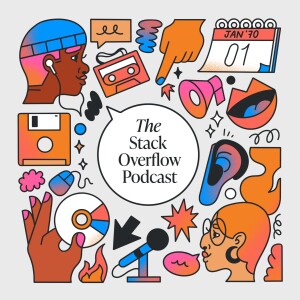
- Podcast Features
-
Monetization
-
Ads Marketplace
Join Ads Marketplace to earn through podcast sponsorships.
-
PodAds
Manage your ads with dynamic ad insertion capability.
-
Apple Podcasts Subscriptions Integration
Monetize with Apple Podcasts Subscriptions via Podbean.
-
Live Streaming
Earn rewards and recurring income from Fan Club membership.
-
Ads Marketplace
- Podbean App
-
Help and Support
-
Help Center
Get the answers and support you need.
-
Podbean Academy
Resources and guides to launch, grow, and monetize podcast.
-
Podbean Blog
Stay updated with the latest podcasting tips and trends.
-
What’s New
Check out our newest and recently released features!
-
Podcasting Smarter
Podcast interviews, best practices, and helpful tips.
-
Help Center
-
Popular Topics
-
How to Start a Podcast
The step-by-step guide to start your own podcast.
-
How to Start a Live Podcast
Create the best live podcast and engage your audience.
-
How to Monetize a Podcast
Tips on making the decision to monetize your podcast.
-
How to Promote Your Podcast
The best ways to get more eyes and ears on your podcast.
-
Podcast Advertising 101
Everything you need to know about podcast advertising.
-
Mobile Podcast Recording Guide
The ultimate guide to recording a podcast on your phone.
-
How to Use Group Recording
Steps to set up and use group recording in the Podbean app.
-
How to Start a Podcast
-
Podcasting
- Podcast Features
-
Monetization
-
Ads Marketplace
Join Ads Marketplace to earn through podcast sponsorships.
-
PodAds
Manage your ads with dynamic ad insertion capability.
-
Apple Podcasts Subscriptions Integration
Monetize with Apple Podcasts Subscriptions via Podbean.
-
Live Streaming
Earn rewards and recurring income from Fan Club membership.
-
Ads Marketplace
- Podbean App
- Advertisers
- Enterprise
- Pricing
-
Resources
-
Help and Support
-
Help Center
Get the answers and support you need.
-
Podbean Academy
Resources and guides to launch, grow, and monetize podcast.
-
Podbean Blog
Stay updated with the latest podcasting tips and trends.
-
What’s New
Check out our newest and recently released features!
-
Podcasting Smarter
Podcast interviews, best practices, and helpful tips.
-
Help Center
-
Popular Topics
-
How to Start a Podcast
The step-by-step guide to start your own podcast.
-
How to Start a Live Podcast
Create the best live podcast and engage your audience.
-
How to Monetize a Podcast
Tips on making the decision to monetize your podcast.
-
How to Promote Your Podcast
The best ways to get more eyes and ears on your podcast.
-
Podcast Advertising 101
Everything you need to know about podcast advertising.
-
Mobile Podcast Recording Guide
The ultimate guide to recording a podcast on your phone.
-
How to Use Group Recording
Steps to set up and use group recording in the Podbean app.
-
How to Start a Podcast
-
Help and Support
- Discover

Building out a managed Kubernetes service is a bigger job than you think
You may be running your code in containers. You might even have taken the plunge and orchestrated it all with YAML code through Kubernetes. But infrastructure as code becomes a whole new level of complicated when setting up a managed Kubernetes service.
On this sponsored episode of the Stack Overflow podcast, Ben and Ryan talk with David Dymko and Walt Ribeiro of Vultr about what they went through to build their managed Kubernetes service as a cloud offering. It was a journey that ended not just with a managed K8s service, but also with a wealth of additional tooling, upgrades, and open sourcing.
When building out a Kubernetes implementation, you can abstract away some of the complexity, especially if you use some of the more popular tools like Kubeadm or Kubespray. But when using a managed service, you want to be able to focus on your workloads and only your workloads, which means taking away the control plane. The user doesn’t need to care about the underlying infrastructure, but for those designing it, the missing control plane opens a whole heap of trouble.
Once you remove this abstraction, your cloud cluster is treated as a single solid compute. But then how do you do upgrades? How do you maintain x509 certifications for HTTPS calls? How do you get metrics? Without the control plane, Vultr needed to communicate to their Kubernetes worker nodes through the API. And wouldn’t you know it: the API isn’t all that well-documented.
They took it back to bare necessities, the MVP feature set of their K8s cloud service. They’d need the Cloud Controller Manager (CCM) and the Container Storage Interface (CSI) as core components to have Vultr be a first-class citizen on a Kubernetes cluster. They built a Go client to interface using those components and figured, hey, why not open-source this? That led to a few other open-source projects, like a Terraform integration and a command-line interface.
This was the start of a two-year journey connecting all the dots that this project required. They needed a managed load balancer that could work without the control plane or any of the tools that interfaced with it. They built it. They needed a quality-of-life update to their API to catch up with everything that today’s developer expects: modern CRUD actions, REST best practices, and pagination. All the while, they kept listening to their customers to make sure they didn’t stray too far from the original product.
To see the results of their journey, listen to the podcast and check out Vultr.com for all of their cloud offerings, available in 25 locations worldwide.
More Episodes
 2025-04-25
2025-04-25
 2025-04-18
2025-04-18
 2025-04-15
2025-04-15
 2025-04-11
2025-04-11
 2025-03-28
2025-03-28
 2025-03-25
2025-03-25
 2025-03-21
2025-03-21
 2025-03-18
2025-03-18
Create your
podcast in
minutes
- Full-featured podcast site
- Unlimited storage and bandwidth
- Comprehensive podcast stats
- Distribute to Apple Podcasts, Spotify, and more
- Make money with your podcast
It is Free
- Privacy Policy
- Cookie Policy
- Terms of Use
- Consent Preferences
- Copyright © 2015-2025 Podbean.com



